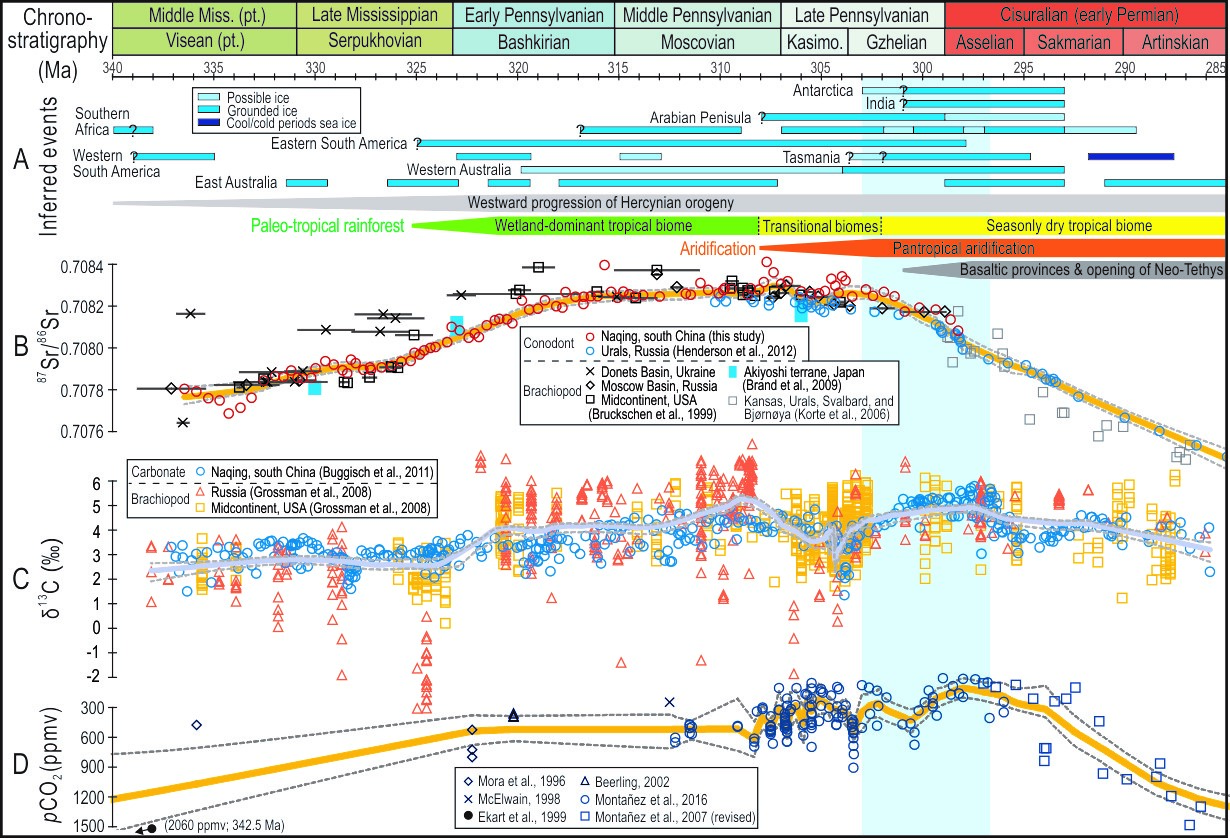
We are currently living in an icehouse world with continental glaciation in Earth’s poles that initiated at ~34 Ma. The Late Palaeozoic Ice Age (LPIA, ~340–285 Ma) is one of two major icehouses of the Phanerozoic and records the only greenhouse gas forced transition from an icehouse with complex terrestrial ecosystems to a fully greenhouse world. It was a time of low atmospheric pCO2 and high pO2, comparable to Today’s atmospheric composition, formation of the supercontinent Pangaea, dynamic glaciation in the Southern Hemisphere, and radiation of the oldest tropical rainforests.
Although it has been long appreciated that these major tectonic, climatic, and biotic events left their signature on seawater 87Sr/86Sr through their influence on Sr fluxes to the ocean, the temporal resolution and precision of the Late Palaeozoic seawater 87Sr/86Sr record remain relatively low. Recently, a new study by a team from NIGPAS and University of California–Davis presents a high-temporal-resolution and high-fidelity record of Carboniferous–early Permian seawater 87Sr/86Sr based on conodont bioapatite from an open-water carbonate slope succession in South China.
The new data define a rate of long-term rise in 87Sr/86Sr (0.000035/m.y.) from ca. 334–318 Ma comparable to that of the middle to late Cenozoic. The onset of the rapid decline in 87Sr/86Sr (0.000043/m.y.), following a prolonged plateau (318–303 Ma), is constrained to ca. 303 Ma. A major decoupling of 87Sr/86Sr and pCO2 during 303–297 Ma, coincident with the Palaeozoic peak in pO2, widespread low-latitude aridification, and demise of the pan-tropical wetland forests, suggests a major shift in the dominant influence on pCO2 from continental weathering and organic carbon sequestration (as coals) on land to organic carbon burial in the ocean.
The new Sr data also provide an important tool for precise stratigraphic correlation of the Carboniferous successions worldwide, which is critical to the “GSSP” works on the four Carboniferous stages.
Download:
